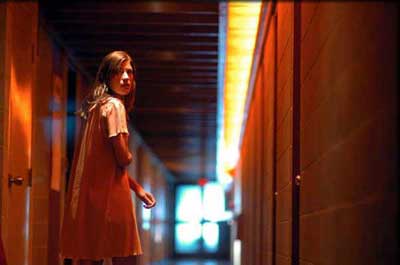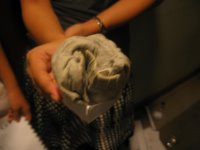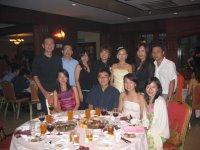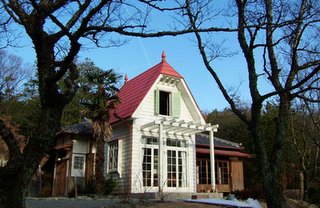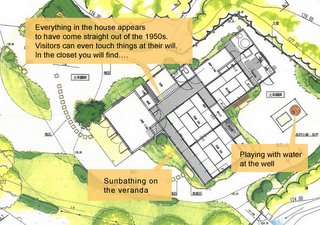 Black and White Houses
Black and White Houses
Went on a tour of B&W houses on the Thurs morning of 24 Nov. It was conducted by Geraldene Lowe, a sprightly lady who has been doing this for over 40 years. She was born a few years before WWII, so she must be in her late-60s now, but it's hard to tell what her ancestry is, especially when she has "Ismail Ahmad" added to her name. But her card also says "Italian Interpreter" so one may assume she's Italian, amongst other things; but whatever the case, her localised accent and encyclopedic knowledge of the anecdotes and histories of Singapore suggest she's been here all her life. From what we gather, she is also one of the founding members of the Singapore Heritage Society and played a part in putting together that seminal book, 'Pastel Portrait', in 1984.
She knew the owners of the houses we visited even when these 'owners' are really the transient tenants of conserved government properties, as new tenants would call her to tutor them about the history of the house they've just moved into. So over the years she has built up this formidable network of friends who are opened to her occasional visits as the head of a prying contingent of strangers. In some houses, we even ventured into the master bedroom. I-Jin observed that invariably, the tenants are banker husbands and artist wife. (The rent for the larger ones near Orchard Rd can be as high as $25k a month! Well, occasionally I dream that Lini will be a really successful banker and... oh well.) And the tenants are invariably white. Now, this isn’t because there aren’t any successful Chinese ex-pats around (think Jackson Tai) but I think it has more to do with what Geraldene put her finger on; that the Chinese do not like to live in B&W bungalows. It could very well be that the Chinese associate B&W with the colours of mourning, so it’s pantang. Whatever the case, the traditionally wealthy Chinese lived in Palladian mansions like the House of Tan Yeok Nee or the demolished Eu Villa. Even when Lee Kip Lin wrote the definitive book on “The Singapore House; 1819-1942”, the B&W houses were hardly mentioned. Could this have been a racial (Peranakan) bias on Lee’s part? Or even a dismissive attitude that links these bungalows as a colonial legacy put up by the British PWD to house their civil servants, and therefore, only tangentially related to the ‘real’ history of Singapore? Whatever it is, we have the physical remains of some 300-odd B&W houses left today and they can’t be wished away, whatever our sentiments. To the British, the colours were probably a reminder of Tudor England, but practically, they were also sensible in the tropics. The white reflects the heat most effectively; and the black was really a result of the creosote paint on the timber to treat against the termites!

We must have visited 5 or 6 houses that morning, but my deepest impression was formed with the first one, at 25 Nassim Road. Of the lot, this was the oldest; about 100 years old. This was prior to running water, piped sewer or connected electricity. It was basically designed to fend for itself in what was once a swampy jungle. Apparently, Raffles has seen how timber would rot in the tropics; in India, Sumatra and Java; so when he established the British colony here, he mandated that the houses here would be built of bricks for the foundations and first storey, and elevated them on piers whenever possible. This way, the upper floors that were built in timber could be repaired wherever necessary without damaging the integrity of the structure. 25 Nassim Rd displayed these characteristics on abundantly spacious grounds, large enough to contain a swimming pool, an abandoned tennis court, detached garage and servants' quarters and still with space left over for tembusu, durian, rambutan, palm and coconut trees. In its prime, the servants would consist of 2 families, as individuals will be assigned singular task; one to fill the lamps with oil and light them every evening, one to fill up all the Ali Baba jars with clear water from the 3 wells in the compounds every morning, one to care for the children, and so on. And the cooking will cater for 2 kinds; western for the main house, and local for the servants. The servants would access the main house via a steep detached stair from the back-- they will not use the main staircase in the house unless they were scrubbing it. And somewhere in the gardens, there would have been a horse stable once.
Opposite the grounds of 25 Nassim Rd and across the road is Eden Hall, the official residence of the British Ambassador. This was featured in the book “Living Legacy” by Robert Powell, but that was in 1994. Now, the grounds of Eden Hall are much reduced, having been parceled out and sold to other developers. Now, we may know that Eden Hall was built by Ezekiel Manasseh in 1905, but only from Geraldene will we hear about his bachelor life, how he met his wife, who was a widow with a child, waiting for transit back to England, and how subsequently, their grand-daughter become some celebrity in England that the English ladies on our bus all seem to know about, and so on. Manasseh had also bought up the nearby Goodwood Park Hotel, which in those days was the German Club. Now we can glean from “Granite and Chunam” that the Germans were forced to surrender the property to the British ‘Government’ when WWI started, but only Geraldene will tell you that before their internment, the Germans raided the Club’s cellar and finished up all the beers and wines! These were all related to us in a conversational way, almost as if in confidence and with a twinkle in the eye, as if she had been around to witness those halcyon days herself. They are histories not written down, but culled from the storehouse of memory. Could they be mere gossips, the way we gossip about the Lee family nowadays? Possibly; but they do go a long way to make history come alive.
“Do you know the novel Tanamera?” Geraldene asked. “The one by Noel Barber? Yes, I threw it aside halfway through because I think it’s trash,” I said. “No, it’s all true. Noel Barber was putting together the stories that were happening at the time. There was an Englishman who fell in love with a Chinese girl and they were both from rich families, and the families wanted to sue Barber… And then their lawyers advised against it, of course, because it would only validate the stories…” “You’re kidding! I thought it was fiction!” “No, it was all true.” Bloody hell, now if only I know which box I’d thrown that novel into…

Other nuggets; Mt Rosie was named after the wife of a German plantation owner, “Anchorpoint” and “Anchorage” were named after the huge “Anchor” beer brewery that once filled the area. We’d drive past the American Embassy (“Fort Knox”, she’d said) and she’ll recall that “there were 3 B&W bungalows here previously…” Further up the road, at the Tanglin junction, she’ll say that the place was once defined by a whole row of B&W terrace houses that were used to house the bachelor postal works. “These beside the Tanglin Mall are the only ones left standing today.” And as we drove up Bukit Timah canal, she’ll relate that the surveyor JT Thomson (for whom Thomson Rd was named) had plodded up the then river at low tide and asked any villages he came across what the name of the village was. “Oh, Wayang Satu,” said one, then “Wayang Dua”, said the next and so on. And when he came to the hill up river, they said “Bukit Temak”, whose meaning escape me now, but Thomson heard it as “Bukit Timah (tin)”, so they started quarrying for tin there, but all they found was granite, which they then break up as gravel to be used for building the roads… And Watten Estate? Geraldene speculates that 'Watten' is an Austrian name... It was once a pepper plantation here, and hundreds of locals had died fighting the Japs during WWII over its hills. When it was turned into a housing estate in the 1960s, the older folks wouldn’t buy the houses for fear the area is haunted. And so on...

At the end of the tour, all the British ladies bought the books Geraldene has brought along, principally “Living Legacy” and “Pastel Portraits” and the map on “Battlefields of Singapore”. She lets on that Julian Davison has just come out with a new book on B&W houses and it’ll be launched next year. (It's on sale in Times and Kinokuniya now. I bought it for $47/- yesterday.) I’ve experienced informative and entertaining tours like hers in Europe and USA before, but never knew it could be found in Singapore. This happened to be Geraldene’s last tour of the year (she’ll be off to Australia till mid-Jan next year) but she will resume next year, and her special tours include WWII battlefield tours, tour of churches, tour of Chinatown (for which she has written a book on) and botanical tours. She can be reached at geraldenestours@hotmail.com.
Chup




